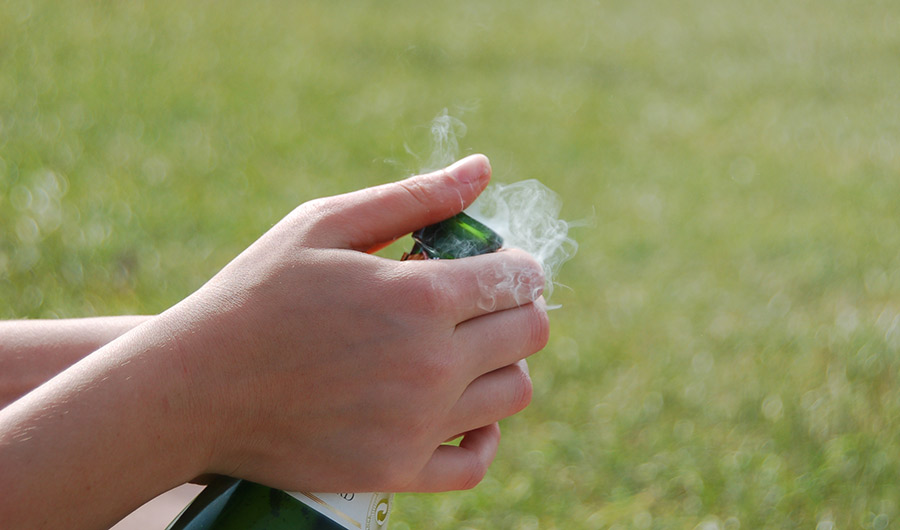BRIEF: When Blue Fog Forms After the Champagne Cork Pops
(Inside Science) -- One of the glories of civilization is how champagne announces its arrival. There is the famous explosive pop and often a gray cloud that shoots out of the bottle mouth. It’s party time.
The pop is easily explained as the result of the pressurized gas in the champagne being suddenly released as the cork flies out. The foggy plume at the bottle mouth is less easily described but a group of scientists from France (where else?) have done so in a paper in the journal Scientific Reports.
The lead scientist in the paper was Gérard Liger-Belair, a chemical physicist at the University of Reims Champagne-Ardenne. His family started in the wine business in 1815 when Louis Liger-Belair, one of Napoleon’s generals bought a vineyard.
Liger-Belair calls himself a “bubble expert.”

These three snapshots of bottles stored at different temperatures (a: 6 degrees C, b: 12 degrees C, and c: 20 degrees C) were each taken 1.2 ms after popping the cork of a bottle of champagne.
Equipe Effervescence, Champagne et Applications / URCA
“Uncorking a bottle is indeed the first action preceding champagne tasting,” the scientists wrote, “and even if it is far safer and advised to uncork a bottle of champagne with a subdued sigh, anyone of us has certainly already experienced popping the cork with a bang.”
Releasing the cork creates an adiabatic explosion. The gas, dissolved carbon dioxide in the liquid produced during the fermentation process, rapidly expands as the cork is removed, dropping the temperature inside the bottle neck. The plume is formed when the very cold gas hits the ambient air outside the mouth of the bottle.
But sometimes there is no plume or the plume created is bright blue, not gray. For this, the scientists found it depended on the temperature at which the champagne is stored.
They took high speed images of what happened inside the necks of clear champagne bottles. Very cold carbon dioxide meets tiny ice crystals in the neck of the bottle created when the gas expands.
When they tested bottles stored at 68 degrees F., the gray cloud was replaced by the blue because the relatively higher temperature of the liquid inhibits the condensation of water vapor in the bottle neck.
The temperature does not affect the taste, Liger-Belair said.


